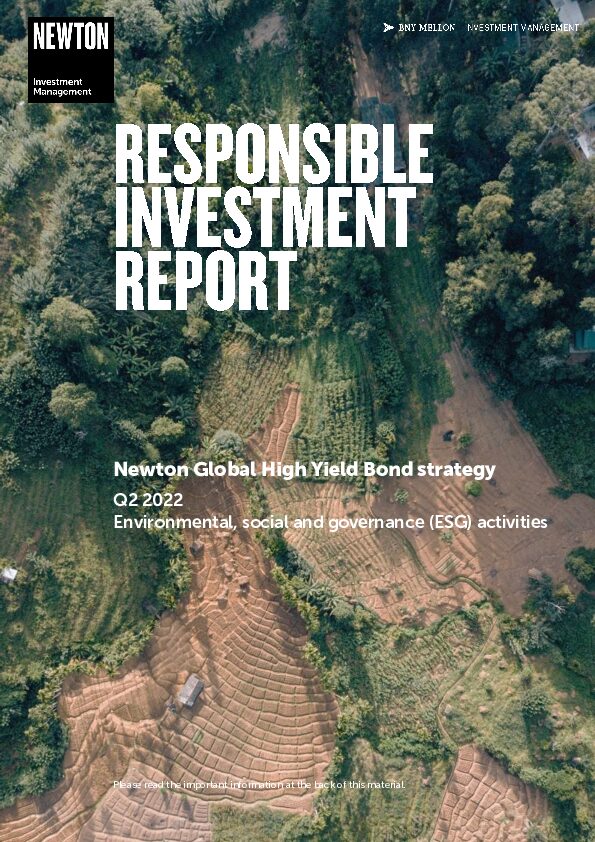Our philosophy and process
- The high-yield strategy invests in sub-investment-grade bonds which are considered riskier than investment-grade bonds. The strategy has the flexibility to actively manage currency exposure to generate additional returns. A constantly evolving and forward-looking approach seeks to anticipate change and identify opportunities.
- Security selection is driven by the use of investment themes, rather than by benchmark composition. Material ESG risks, opportunities and issues are considered as part of the investment research process.
- Every time we consider a security or look at an industry or country, it’s in the context of what’s happening across the world. We believe the investment landscape is shaped over the long term by some key trends, and we use a range of global investment themes to capture these.
Investment team
Our Global High Yield Bond strategy is managed by a focused, experienced fixed-income team. Our investment team of research analysts and portfolio managers works together across regions and sectors, helping to ensure that our investment process is highly flexible. Guided by our global investment themes, to identify opportunities and risks through research and debate.
- 21
- years’ average investment experience
- 14
- years’ average time at Newton
-

Parmeshwar Chadha
Portfolio manager, fixed income
-

Scott Freedman
Analyst and portfolio manager, fixed income
-

Paul Brain
Investment leader, fixed income
-

Howard Cunningham
Portfolio manager, fixed income
-

Jon Day
Portfolio manager, fixed income
-

Carl Shepherd
Portfolio manager, fixed income
-

Trevor Holder
Portfolio manager, fixed income
-

Martin Chambers
Credit analyst, fixed income
-

Ashwin Palta
Credit research analyst, fixed income
-

Jeevan Dhoot
Credit analyst, fixed income
Strategy profile
-
Objective
-
To achieve strong returns and a high yield from a portfolio invested predominantly in global fixed-interest securities
-
Performance benchmark
-
ICE Bank of America Merrill Lynch Global High-Yield excluding Bank Capital & Junior Subordinated (GBP hedged)
-
Strategy inception
-
Composite inception: 1 January 2001
Your capital may be at risk. The value of investments and the income from them can fall as well as rise and investors may not get back the original amount invested.
Newton will make investment decisions that are not based solely on ESG considerations. Other attributes of an investment may outweigh ESG considerations when making investment decisions. The way that ESG considerations are assessed may vary depending on the asset class and strategy involved. The research team performs ESG Quality Reviews on equity securities prior to their addition to Newton’s Research Recommended List (RRL). ESG Quality Reviews are not performed for all fixed income securities. The portfolio managers may purchase equity securities that are not included on the RRL and which do not have ESG Quality Reviews. Not all securities held by Newton’s strategies have an ESG Quality Review completed prior to investment, although since 2020 it has been a requirement for all (single name) equity securities to have an ESG Quality Review before they are purchased for the first time.





